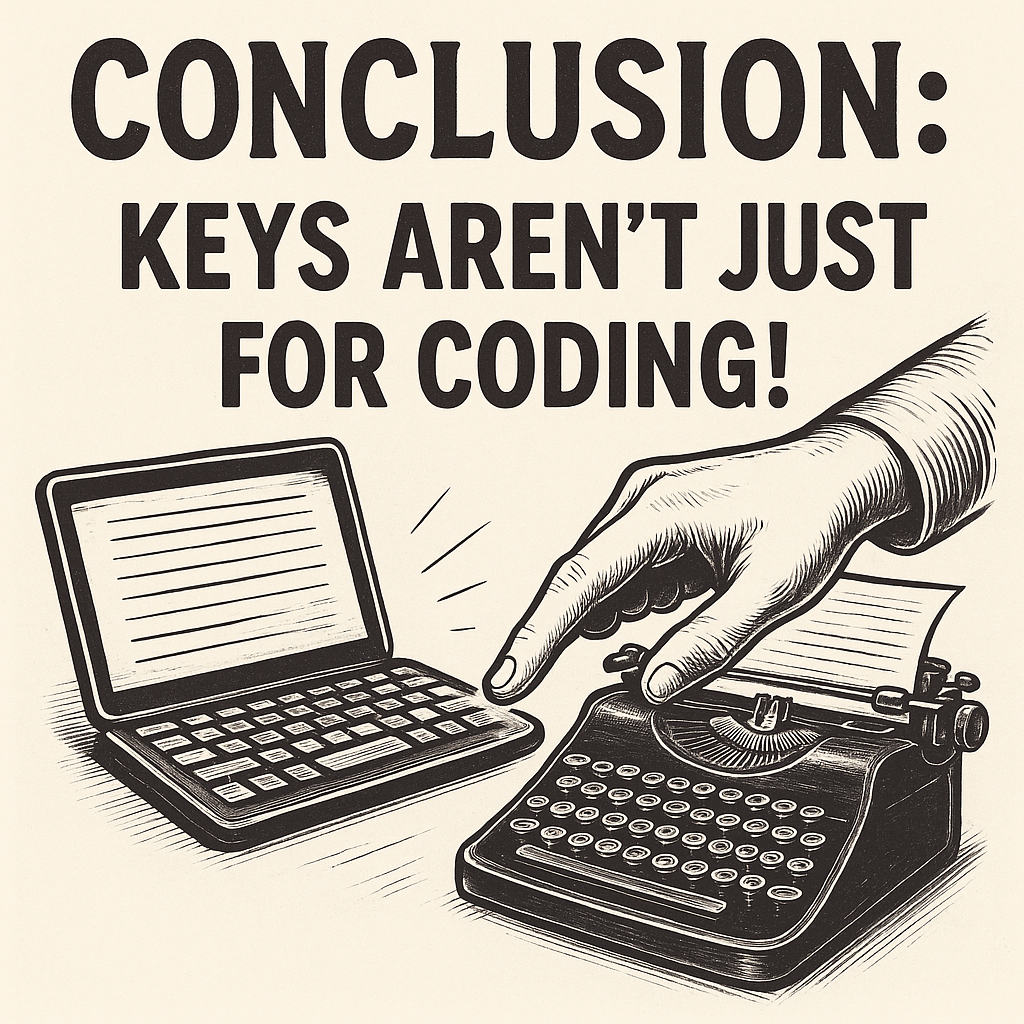The role of writing
Hey fellow coders and keyboard ninjas!
We all know the feeling, right? Deep in the trenches of code, fifth cup of coffee kicking in, the screen a hypnotic kaleidoscope of brackets and semicolons. We love solving problems with code. So much so, that we sometimes forget… well, everything else. Especially writing.

For a long time, writing felt like that annoying linter warning you just want to ignore with // eslint-disable-next-line. “Why should I write down what I’m doing? The code is the ultimate truth! Comments are for newbies, and nobody reads docs anyway!” Sound familiar? I was fully bought into the “code-is-self-documenting” cult. Spoiler alert: It wasn’t. And that cost me time. A lot of time.
The Bug in the Thinking Process: When Phrasing Falters
I noticed something: Whenever I tried to put an idea or concept into words (even just for myself) and found myself stumbling, it wasn’t just a lack of vocabulary. It was a bug report for my own thought process! A clunky phrase, a sentence that felt like spaghetti code – that was a clear indicator: The thought itself hadn’t finished compiling yet.
This struggle for the right words forces you to debug the idea. You have to clarify variables (terms), define functions (connections), and rethink the architecture (the structure of the thought). Until it feels “right.” And lo and behold: If you can write an idea down clearly and understandably, chances are pretty darn good that it’s conceptually sound. It’s like a passing unit test for your brain, before you even commit a single line of code.
From Code-First Junkie to Concept-Writer (A Conversion Story)
My old workflow: Problem -> Caffeine -> Vague idea in head -> Hands on keyboard -> Hammer away until it (supposedly) worked. The problem? Often, I only realized my fundamental assumption was flawed when I was already deep in dependency hell, trying to tame the last obscure edge-case monster. Finding and fixing these conceptual errors late in the process felt like trying to replace a house’s foundation while you’re already putting on the roof tiles. Time cost: Enormous. Frustration level: Integer.MAX_VALUE.
Today, I do it differently. Problem -> Caffeine -> Concept in Text Form! I try to sketch out the solution first on half a page of prose. And this is where the magic happens: Where can’t I articulate something clearly? Those are the weak spots. I iterate on this text, refining the phrasing until it reads logically and completely. You can refactor half a page of text in minutes. A complex codebase? Don’t ask…
LLMs: My New Pair-Programming Partner (Who Can Type Fast)
This “Write-First” principle has proven invaluable, especially when dealing with our new friends, the Large Language Models. LLMs aren’t magic crystal balls that conjure code out of thin air (even if it sometimes feels like it). They’re more like an extremely well-read, lightning-fast intern. What they do brilliantly: Extract relevant knowledge from a massive dataset (basically, the internet) and tailor it to our specific requests.
My approach: I write the high-level concept, the architecture, the core logic – essentially the blueprint and the important structural calculations. Then I hand this clear, thought-out plan to the LLM and say, “Okay, now paint in the details. Generate the boilerplate code, research these API specifics, draft the documentation structure.” The “painting” is often the time-consuming part. By providing the clear structures, I let the LLM handle the grunt work. Efficiency boost? Definitely! But only because the groundwork – the clear thinking and writing – was already done. Without a clear prompt, you often just get eloquent nonsense back. Garbage In, Garbage Out applies to AI too.
Why Your System.out.println("Meeting outcome captured!"); Isn’t Enough
Let’s be honest: What’s discussed in a meeting is often ancient history the moment the last participant leaves the room (or the Zoom call). “Didn’t we agree to do it differently?” Sound familiar? The spoken word is fleeting, like an unsaved buffer. And it scales terribly. Try getting ten people on the same page by telling each one the story individually.
Writing solves this. A well-formulated document, a clear concept, an architecture sketch in text form – that’s persistent. It can be shared. It enables asynchronous collaboration. New team members can get up to speed. Decisions are traceable. It’s like a well-maintained Git repository for thoughts.
Free Your Mind: git commit -m "Thought process checkpointed"
Our brain is amazing, but it’s not a multi-core marvel with infinite RAM when it comes to active contexts. Keeping every thought, every open task, every vague idea in your head eats up mental capacity. You know that feeling when a detail for Project X keeps you awake at 3 AM, even though you’re supposed to be working on Project Y?
Writing it down is like a git commit for your thoughts. As soon as you’ve written down an idea, a plan, or a problem to the point where you know you can pick up the thread later, your brain can let go. It trusts that the information is safe. That frees up space! It’s like closing 50 browser tabs because you know the links are saved in your bookmarks. Written thoughts free up your head and make you ready for the next challenge – or at least for a more restful sleep.

From Thought-Chaos to Concept-Canvas
An unspoken, unwritten idea is like a ghost. It floats around, vague, undefined. You spin your wheels mentally, not really getting anywhere. Formulating and writing down that idea is like the first brushstroke on a blank canvas. It’s the mkdir my-new-project && cd my-new-project moment for your creativity.
You define the basic structures. You give the idea form. And suddenly, you see not only what’s there, but also what’s missing. You create a framework within which new, more detailed thoughts can unfold. Without that first step, the canvas stays empty, and the idea remains just a fleeting notion.

For me, writing has transformed from an annoying chore into an indispensable superpower. It creates Clarity, saves Time, improves Collaboration, frees up Mental Space, and acts as a catalyst for Ideas.
So, my challenge to you: The next time you face a tricky problem, resist the urge to immediately smash the keyboard. Take a few minutes. Open a simple text editor (or grab a pen and paper, you rebel!). Try to formulate the solution or the concept in clear words. You’ll be surprised how many bugs you find before they even become code.
Your future, less-stressed self will thank you (or at least curse you slightly less often). Happy Writing – and then Happy Coding!

